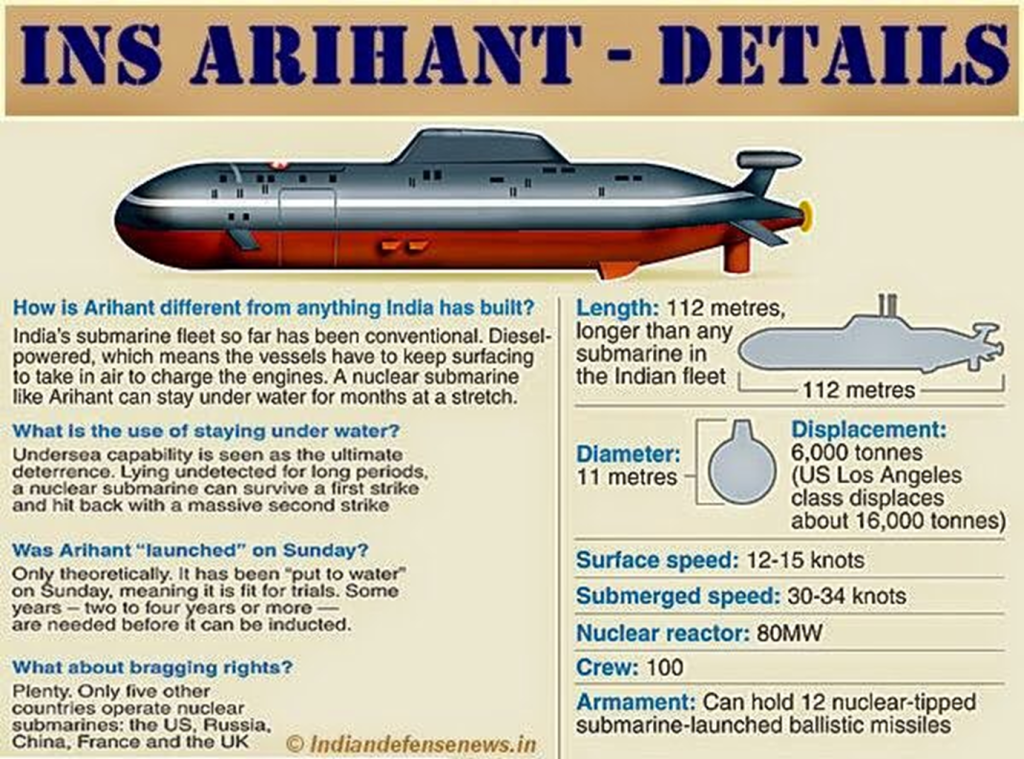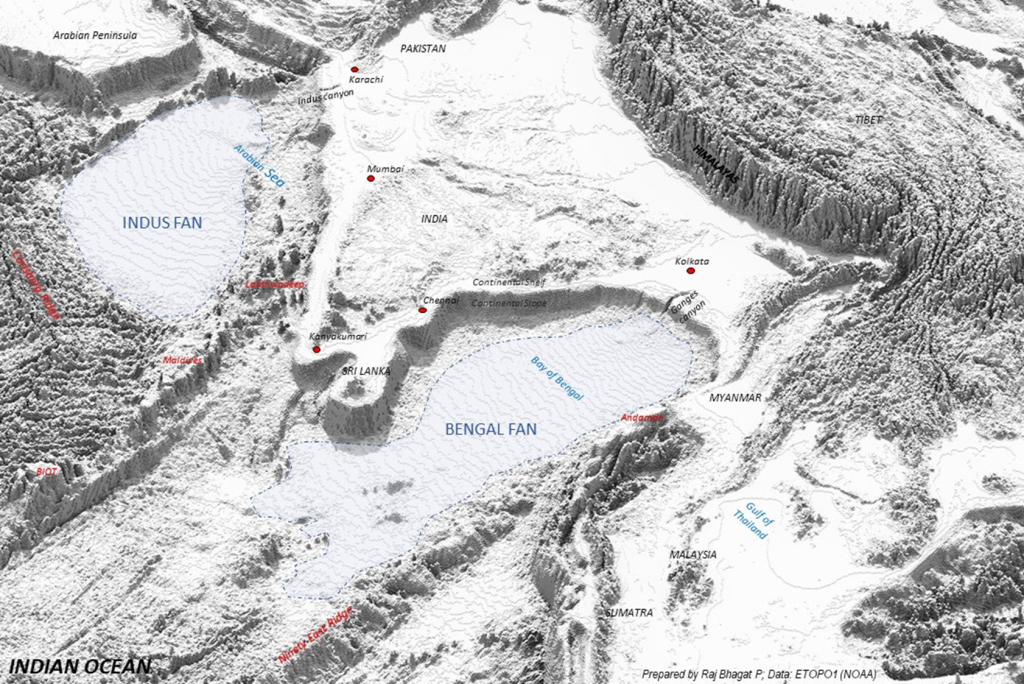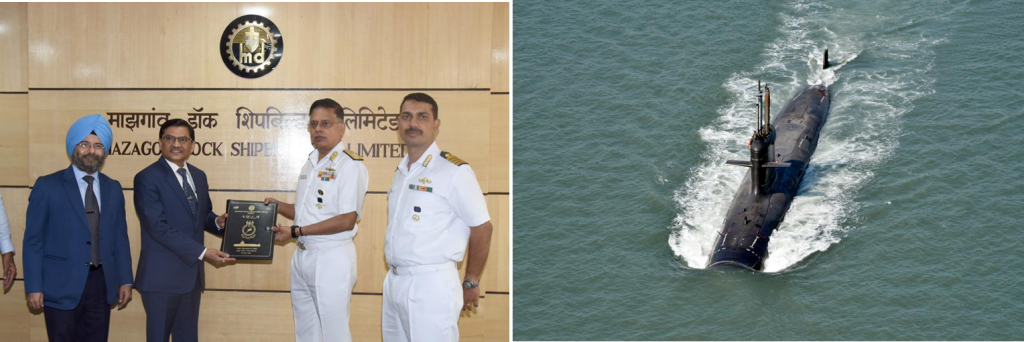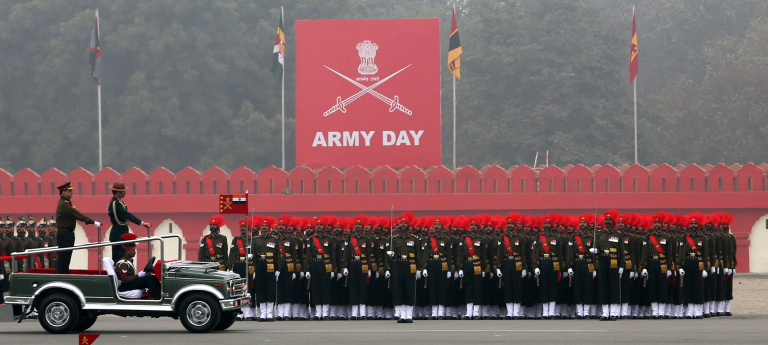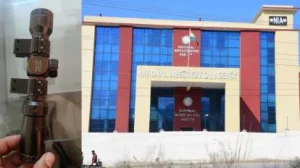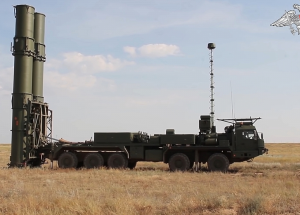Navy is now setting up a new advanced facility to seamlessly communicate with its stealthy predators out on long-range patrols.
Indian Navy Setting Up Base To Control Submarines
2nd nuclear-powered submarine INS Arighaat as part of the plan to expand both the strategic as well as conventional underwater combat fleets, the Navy is now setting up a new advanced facility to seamlessly communicate with its stealthy predators out on long-range patrols. The project for the very low frequency (VLF) transmitting station at Vikarabad in Telangana is slated for inauguration by defence minister Rajnath Singh on October 15.
“The strategically-important VLF facility, once it becomes fully operational in two-three years, will provide round-the-clock encrypted communication connectivity to submerged submarines across India’s entire area of interest,”. “VLF radio waves, which operate in a frequency band of 3 to 30 Kilohertz, can penetrate seawater to a certain depth for such purposes,” he added. Only a few nations have such VLF capabilities, which are especially critical for “command and control” of nuclear submarines deployed on long-range deterrent patrols.
The Navy has been running a VLF station at Tirunelveli in Tamil Nadu since 1990. The new state-of-the-art VLF facility at Vikarabad is necessary for “maintaining 24x7x365 communication” for the planned induction of both diesel-electric as well as nuclear submarines, with an eye firmly on China’s increasing naval forays into the Indian Ocean Region (IOR).
On Aug 29, India had inducted its 2nd 6,000-tonne SSBN (nuclear-powered submarine with nuclear-tipped ballistic missiles) INS Arighaat, which is also capable of carrying some 3,500-km range K-4 missiles. Her forerunner INS Arihant is armed only with the 750-km range K-15 missiles.
India plans to induct the third SSBN, with a displacement of 7,000-tonne, as INS Aridhaman early next year, while a fourth is also under construction under the secretive advanced technology vessel (ATV) project.
There is also the plan to eventually build 13,500-tonne SSBNs, with much more powerful 190 MW pressurised light-water reactors. Moreover, the PM-led cabinet committee on security on Oct 9 also cleared the long-pending Rs 40,000 crore ‘Project-77‘ to construct two nuclear-powered attack submarines (called SSNs in naval parlance). It will take 10-12 years to build these SSNs, with 190 MW reactors and displacement of 9,800-tonne, meant for conventional (non-nuclear) warfare.
On the diesel-electric front, the Navy will commission the sixth French-origin Scorpene submarine Vagsheer in Dec under the over Rs 23,000 crore ‘Project-75’ underway at Mazagon Docks (MDL). While the Navy has six old Russian Kilo-class and four German HDW submarines, India is now finalising with France the construction of another three Scorpenes at MDL for over Rs 30,000 crore.
Then, Germany and Spain are in contention for the long-pending over Rs 42,000 crore`Project-75-India’ to build six advanced diesel-electric submarines, with AIP (air-independent propulsion) for greater underwater endurance and land-attack cruise missiles.




